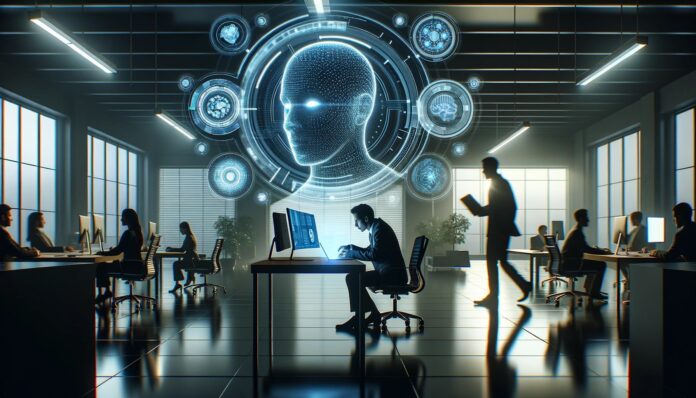
The modern workplace is a hub of activity — employees balancing hybrid schedules, visitors coming and going, and critical operations running on interconnected systems. With this dynamic environment comes a growing challenge: how do businesses ensure both physical safety and cybersecurity without disrupting trust or productivity?
As workplaces evolve, so do the challenges associated with maintaining security. Hybrid and remote work models introduce new complexities, requiring businesses to protect both people and data across multiple environments. At the same time, IoT devices and AI-powered systems are transforming how organizations monitor and mitigate risks. These trends underscore the growing importance of a comprehensive security strategy — one that protects assets, ensures compliance, and builds a better experience for employees to be happier and more productive.
The Benefits of a Strong Workplace Security Program
A strong workplace security program does more than just protect assets—it fosters a safer, more efficient environment for employees, visitors, and the business itself. Here’s why prioritizing security is essential:
- Protecting Your Most Valuable Asset—People: Employees and visitors are the core of any business. Their safety and their workplace experience should be the top priority, as a secure environment enhances workplace experiences and builds trust. This, in turn, bolsters your company’s reputation and employee satisfaction.
- Safeguarding Data and Systems: As cyberattacks continue to rise, protecting sensitive data and systems is critical. With 52% of organizations reporting data breaches and 62% of leaders planning to increase resources for workplace protection, cybersecurity is more important than ever. A robust security program ensures business continuity by defending against data breaches, network threats, and privacy violations.
- Controlling Access and Reducing Risk: With employees, contractors, and visitors coming and going, managing access to sensitive areas is crucial. Effective access control systems allow businesses to monitor who enters and exits and tailor permissions for different individuals. These systems not only enhance security but also reduce the risks associated with unauthorized access.
- Ensuring Compliance and Avoiding Penalties: Security isn’t just a safety measure — it’s a compliance issue. Regulations often mandate specific security protocols, and failure to meet them can be costly. Businesses need to stay ahead of these standards to protect their reputation and avoid penalties.
Essential Tools for Workplace Security
Technology is at the heart of modern workplace security, offering innovative ways to safeguard people, assets, and data. From controlling access to managing emergencies, the right tools can enhance safety and streamline operations. Here are five foundational technologies every workplace should consider:
- Access Control Systems: Access control systems are essential for ensuring that only authorized individuals can enter specific areas of your workplace. These tools can take various forms, such as key cards, biometric scanners, QR codes, or mobile-based access platforms. By managing permissions, businesses can protect sensitive areas like server rooms or executive offices while maintaining a seamless experience for employees and visitors. Comprehensive systems also enable organizations to monitor and adjust access across multiple locations, ensuring a consistent approach to security.
- Visitor Management Systems: The days of paper visitor logs are long gone. Modern visitor management systems (VMS) provide a streamlined, professional way to track and control who enters and exits your workplace. These systems often include pre-registration features, ID verification, and blocklist capabilities to discreetly prevent unauthorized access. Beyond enhancing security, they help organizations comply with privacy regulations by securely handling sensitive visitor data. A robust VMS not only ensures safety but also leaves a positive impression on guests.
- Emergency Response Systems: Emergencies require quick, coordinated communication to keep everyone safe. Mass notification systems, such as digital alerts or mobile messaging platforms, allow organizations to disseminate critical information in real time. These tools are invaluable during situations like evacuations, lockdowns, or severe weather events, enabling businesses to act decisively and minimize risks. Integrating these systems with access control and visitor management tools ensures that emergency protocols are consistent and comprehensive across employees and visitors alike.
- Cybersecurity Measures: With workplaces increasingly reliant on digital infrastructure, robust cybersecurity tools are a critical component of any security strategy. Password protection platforms, multi-factor authentication, and encryption technologies help safeguard sensitive data and intellectual property. Encouraging employees to adopt strong password practices and investing in tools to manage shared account credentials can further bolster protection against cyber threats.
- User Experience: The effectiveness of these tools depends on more than just security — they must offer a smooth user experience. Systems that are hard to use or frustrating can drive employees to bypass security measures or, at best, use them reluctantly. A seamless, intuitive interface encourages adoption, enhancing compliance and morale. Well-designed security tools not only protect but also contribute to a positive workplace atmosphere.
Building a Culture of Security in the Workplace
Security is more than just implementing tools — it’s about embedding a safety-first mindset into the organization’s culture. A strong security culture begins with regular risk assessments and audits to identify vulnerabilities. Leaders must prioritize the most critical measures based on the unique risks their business faces. However, security is most effective when employees feel secure and are fully engaged with the tools designed to protect them. Creating an environment where employees feel empowered to use security tools confidently and without frustration is key to sustained success.
Employee education is another cornerstone of a secure workplace. Training programs should provide employees with the knowledge to recognize and respond to both physical and digital threats. The best training can fall short if employees are uncomfortable with or resistant to using security tools. When systems are intuitive and easy to navigate, employees are more likely to engage with them proactively, reducing human error and empowering them to take ownership of their role in workplace safety.
Finally, oversight is essential. Establishing a cross-functional team to manage workplace security ensures consistent implementation and accountability. When security becomes a shared responsibility, it fosters trust, enhances collaboration, and strengthens the culture of safety across the organization.
Investing in a Safer Workplace
Workplace security is no longer a background operation — it’s a critical investment in people, trust, and long-term success. By integrating advanced tools, responding to emerging trends, and cultivating a culture of security, organizations can protect their most valuable assets: their people, data, and reputation. The right security tools not only protect but also enhance the employee experience, ensuring that systems are seamless and intuitive. This fosters greater adoption, boosts morale, and strengthens retention.
Securing the workplace is about more than compliance or technology; it’s about creating an environment where employees feel safe, empowered, and ready to thrive. When employees trust the tools they use, they’re more likely to embrace company policies, including return-to-office initiatives, leading to stronger engagement and long-term success.




















